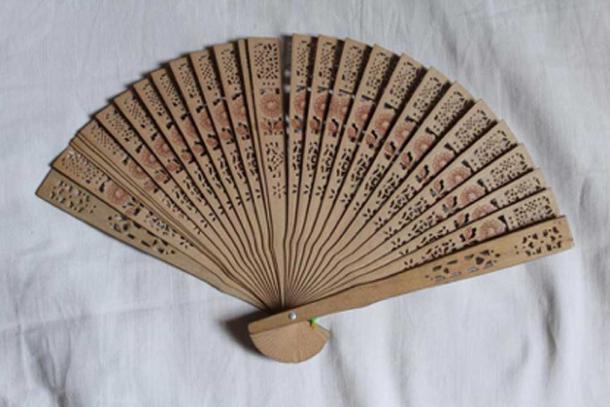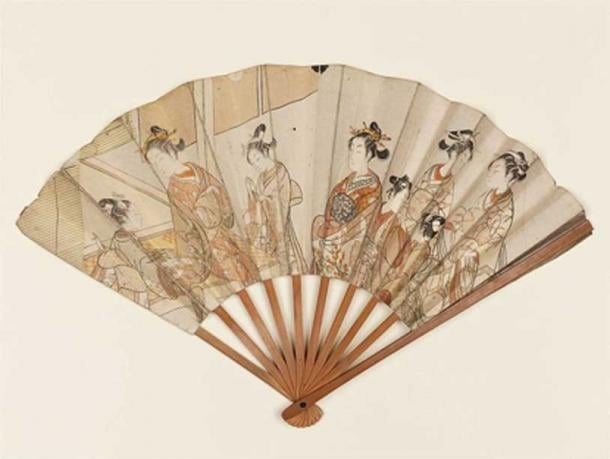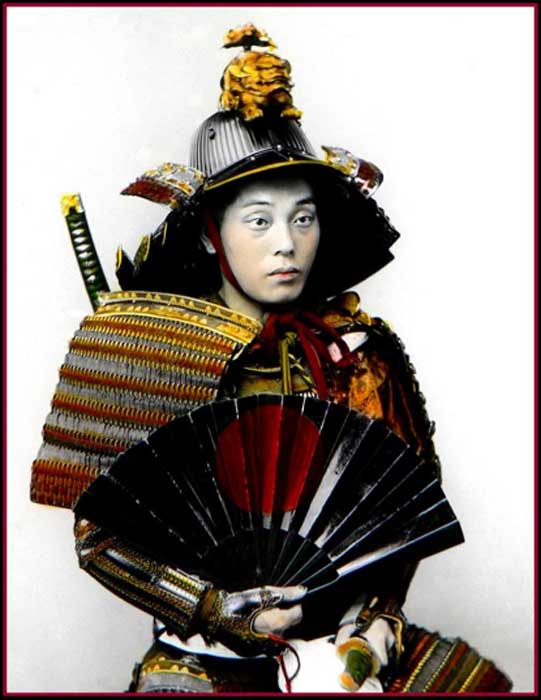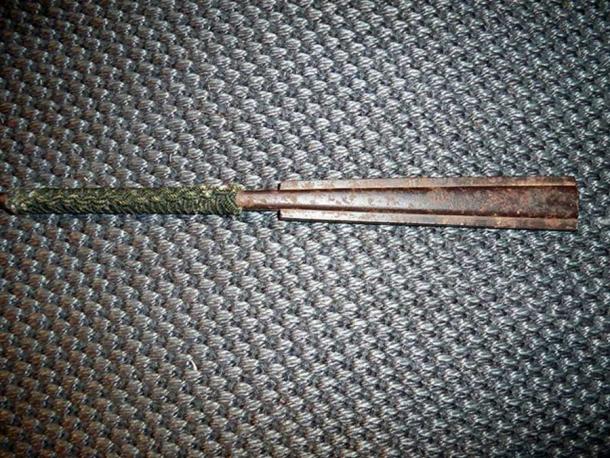
A Japanese Fan Became a Deadly Weapon in the Right Hands
In ancient Japan, the Samurai utilized a wide range of weaponry other than swords, bows, and spears. These weapons were used in places where swords were not allowed to be carried, for self-defense purposes, or when the use of swords was not ideal. One of the most interesting items that gradually became a weapon is the Sensu, the Japanese folding fan.
A hand fan was considered an important fashion accessory in Japan, especially for people who belonged to the Samurai and Chonin classes. Folding fans were invented in Japan, and they were used by the Japanese aristocrats as early as the 6th century. A folding fan is a practical item that was used to beat the heat during hot and humid weather, but it was considered a luxury item and only aristocrats, wealthy merchants, and Samurai could afford a Sensu. It was a status symbol during that time.
- The Brutality and Delicacy of Samurai Armor: Superior Protection with a God-like Aesthetic
- A Flexible and Deadly Blade: The Dangerous Urumi
- 10 Innovative Medieval Weapons: You Would Not Want To Be At The Sharp End Of These!
The Beginnings of the Japanese Folding Fan (Sensu)
The earliest version of the Sensu is the Hinoki fan. A Hinoki fan was made of thin pieces of Japanese cypress Hinoki wood. Many years later, folding fans evolved and became more elegant. Japanese artisans then started to paint and sprinkle their folding fans with silver and gold foil. Fans that were decorated with poems, paintings, and religious writings were valued as memorable gifts.

A wooden hand fan. (CC0)
During the 7th century, the Sensu became a significant element of court etiquette. The Samurai, especially those who had high rank, were required to know how to carry and hold the Sensu. They used to bring their fans during social gatherings.
During the 13th century, the Japanese started to export folding fans to China. The fashion trend then reached Europe. The courtiers of France’s Bourbon dynasty considered the Kyo Sensu a highly prized item at that time. During the 14th century, Kyoto artisans matched folding fans with amazing art works in the styles of Noh (musical drama), Buyo (classical Japanese dance) and tea ceremony.

A folding hand fan set with two prints by the Japanese ukiyo-e artist Suzuki Harunobu. (Public Domain)
How Japanese Men and Women Used the Folding Fan
Japanese women used the Sensu to hide impolite expressions. They also used it as a flirtation tool. An open Sensu was used to hide behaviors that were considered socially offensive. It was used to cover the mouth when chewing food or laughing.
On the other hand, Japanese men used to carry their fans either in their hands or tucked in a sash or obi. They did the latter when wearing ceremonial outfits . The folding fan was rarely out of a Samurai’s reach, especially during formal events. In fact, during the Edo period, a retainer without his fan would be incomplete and compared to a Samurai without his Daisho. (A daisho refers to the set of two Samurai swords, the katana and Wakizashi. It served as a sign that a person is a real Samurai.)

Portrait of a Samurai Warrior and His War Fan. (Okinawa Soba (Rob)/CC BY NC SA 2.0)
The Tessen
How can something as elegant and luxurious as a folding fan become a deadly weapon? The Tessen, a Japanese war fan, was one of the commonplace items that was disguised as a harmless accessory during feudal Japan. This surprise weapon is made of iron. The word Tessen literally means “iron fan.”
A solid Tessen is either carved from hardwood or forged from iron in order to look like a closed fan. It is not only durable but also less expensive to make. Many people considered it as a more effective combat tool than a folding style Tessen.

Japanese Edo period solid iron fan. (Samuraiantiqueworld/CC BY SA 3.0)
The solid Tessen became popular with the Samurai, Yakuza, Machi-yakko, and Otokodate. A small folding or solid Tessen was a common self-defense weapon, while a large folding Tessen was a symbol of authority.
How the Samurai Used the Tessen
There were cases when the Samurai needed to carry a goshinki or self-defense weapon in addition to a daisho. Because the Sensu was very common during Japanese history, the Samurai and Chonin found that a folding fan could be a suitable weapon with only a few modifications.
The Samurai used to wear the Tessen when they were disarmed. This could be for several reasons, like when they met their superiors, did household chores, when on leisure time, or any other time the Samurai did not carry their swords. When Samurai visited other people’s homes, they left the Katana or sometimes also the Wakizashi outside with an attendant. However, they could keep their folding fans in their obi. This meant that the Samurai were never really unarmed and could use the Tessen to defend themselves in case of an emergency.

Nuinobedō Tōsei Gusoku Armor with war fan and gold paulownia leaf crest 16th century AD, Japan. (Mary Harrsch/CC BY NC SA 2.0)
Tessen-jutsu: Fighting with a Fan
Tessen-jutsu is mainly intended for self-defense, even though it is also considered as a part of classical Japanese weapon arts. The techniques focus more on self-protection rather than offense. Most of the techniques were designed to restrain an opponent rather than cause injuries or death.
High ranking Samurai and generals used the Tessen to give signals and orders and considered Tessen-jutsu as a sophisticated martial art. For them, Tessen-jutsu was more compassionate than dueling with their lethal swords.
There were numerous duels wherein people who used iron fans won against more lethal swords. There are also a lot of recorded deaths caused by blows from a Tessen.
Tessen-jutsu Schools
Tessen-jutsu does not have individual schools. It was rarely taught as an individual martial art. Many sword schools (kenjutsu-shoryuha) and unarmed fighting schools (jujutsu-shoryuha) incorporate a mixture of fan and short stick techniques with other forms of martial arts.
- Ten Diabolical Weapons and Strategies of War from the Ancient World
- Deadly Female Ninja Assassins Used Deception and Disguise to Strike Their Target
- The Supernatural Weapons of the Mahabharata and Their World Destroying Power
There were only four classical Japanese martial arts schools that included Tessen-jutsu in their curriculum - Echigo-ryu, Miyake-Shingan-ryu, Uesugi-ryu, and Yagyu-ryu. Of all these four schools, only Miyake-Shingan-ryu and Yagyu-ryu still exist today in their original form and lineage.
Notable People Who Used the Tessen
Tokugawa Ieyasu, the first shogun of the Tokugawa shogunate, was one of the historical figures who used the Tessen during fights. For him, the Tessen was a grand item and he used it to startle his enemies.

Tokugawa Ieyasu. (Public Domain)
In the 16th century, a popular swordsman named Ganryu also defeated his heavily armed opponents with his Tessen.
Top Image: Detail of ‘The warriors Kumagai Naozane and Taira no Atsumori.’ One of the warriors is brandishing a Japanese war fan called a Tessen. Source: Public Domain
By Rey Martin / Samurai Swords Store
Visit the Samurai Swords Store at https://www.samuraiswords.store/
Updated on November 30, 2021.
References
Cunningham, D. Samurai Weapons: Tools of The Warrior. https://www.amazon.com/Samurai-Weapons-Warrior-Don-Cunningham/dp/480530958X
Cunningham, D. Secret Weapons of Jujutsu. https://www.amazon.com/Secret-Weapons-Jujutsu-Don-Cunningham/dp/0970280807
Genbuken Tokyo Shibu and Tosen (Roy) Ron. 2018. Tessen Sensu. Genbuken Tokyo Shibu. Available at: http://www.ninpo.org/militaryhistory/weapons/tessen.html















